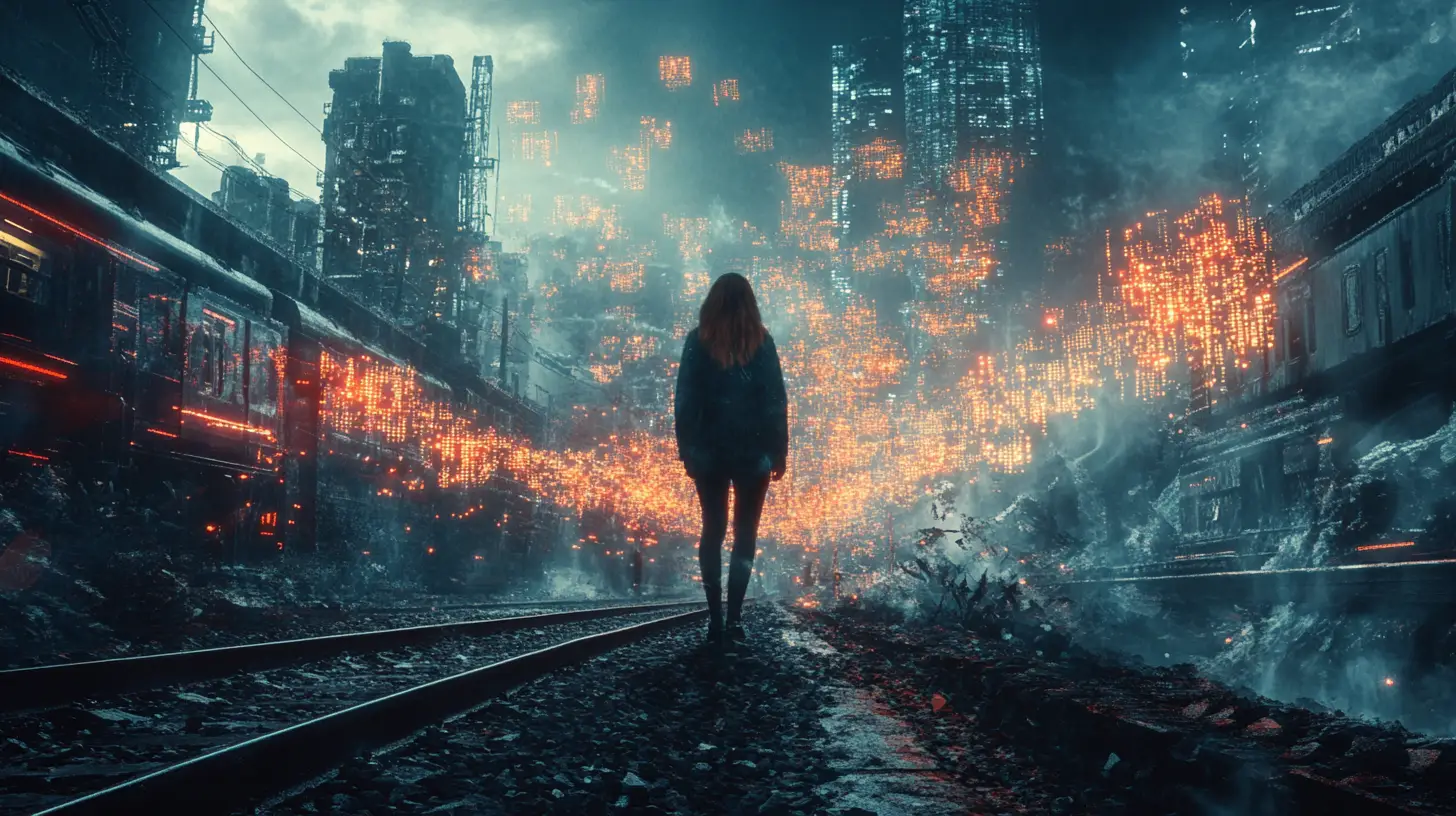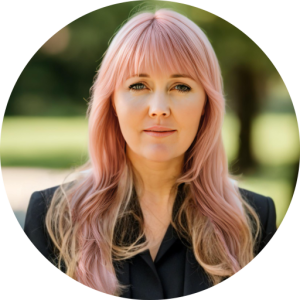
When Ayn Rand published Atlas Shrugged in 1957, she did more than write a novel – she created a prophecy of the future in fictional form. In an era when women couldn’t get credit cards without male cosigners and female executives were virtually nonexistent, she dared to put a woman at the helm of America’s most vital industry. The dominant attitude at that time was women and children should be seen and not heard. But today, nearly seven decades later, the book’s true prescience lies not just in its revolutionary portrayal of female leadership, but in its warning about what happens when corruption and money become more important than the humans who build the world through their hard work.
I’ve read Atlas Shrugged five times over the past fifteen years. It is one of many bibles that I have used to shape the person who I want to be in the world and gave me resilience facing the odds of being a woman in technology. The book’s influence runs so deep that I legally changed my last name to Taggart over 10 years ago. I adopted her name and adopted her philosophies.
Fourteen years ago, I met my husband who, like John Galt, challenged my thinking without trying to change my essence. Through respectful debate and questioning, not directive guidance, he helped me see blind spots in my understanding of business and power. He has given me both information about the realities of the world, but also accepts me for who I am, even if we disagree. I have spent the past few years on a spiritual quest to find out why I was succeeding in my entrepreneurial career. My business degree, MBA, incubators, and bootcamps all gave me fundamentals, but this education never led to my success. This led me to discover that true power comes from integrating multiple truths – the rational and the spiritual, the practical and the visionary. I have become a whole person, not just a technologist and not just a woman in a man’s world struggling to be seen.
What makes this story so crucial today is that we’re living through our own version of Atlas Shrugged. We’re watching institutions get slashed and burned, not with the clean philosophical clarity of Rand’s novel, but with messy, real-world consequences for millions of honest and competent people caught in the trap of failing systems. The question isn’t just “Who is John Galt?” anymore. The question is: How do we preserve human dignity while transforming systems that no longer serve humanity?
In Rand’s world, the answer was binary – withdraw completely or remain complicit in the system. But our reality demands a more nuanced response. Most people aren’t looters or moochers; they’re simply caught in systems with leaders that have lost their way.
This is why I return to Atlas Shrugged again and again. Not only because it features a powerful woman protagonist, but because it illuminates the eternal struggle between human creation and systemic corruption. The book’s true genius lies not in its specific solutions, but in its unwavering defense of human potential against forces that would diminish it.
Today, we need more than Galt’s Gulch – we need bridges. Bridges between the old world and the new, between technology and humanity, between excellence and empathy. We need to understand both Dagny’s fight to preserve the systems that have been working for centuries and Galt’s evolutionary vision of starting anew. Most importantly, we need to recognize that unlike in Rand’s novel, our task isn’t to let the world collapse – it’s to transform the people who have been freed from jobs that were doing more harm in the world than good and leverage their skills and abilities for good creation in the world.
Dagny Taggart’s story is one of relentless determination in the face of mounting impossibility. As COO of Taggart Transcontinental, she didn’t just run a railroad – she fought daily bureaucratic battles to maintain standards of safety and excellence in a world increasingly hostile to the very concept. When corrupt government officials and their crony capitalist friends tried to force her to use their inferior steel rails through manipulated regulations, she instead chose Rearden Metal, a revolutionary new alloy. Her choice wasn’t just about better technology – it was a stand against a system where government officials and established businesses colluded to protect their interests at the expense of genuine innovation and progress. When regulations demanded she slow her trains to protect politically-connected competitors, she made them run faster.
In the midst of this struggle, Dagny discovered something extraordinary – an abandoned factory in Wisconsin containing a revolutionary motor. But this wasn’t just any motor; it was something that defied all known principles of energy production, found in the trash. Why would this brilliant inventor discard this precious treasure that had the capability to change the world? The motor represented hope in physical form – proof that human ingenuity could still create marvels. But like everything else of value, its creator had vanished.
But her greatest challenge wasn’t the external opposition – it was watching the inexplicable disappearance of the world’s most capable people. One by one, the great minds of society vanished: a banker who refused to provide loans to those who had no intention of repaying them disappeared after being forced by a judge to fund fraudsters; an actor who fought to create meaningful art through film rather than appear in roles that degraded beauty and intelligence; a brilliant industrialist whose mind was renowned throughout the country suddenly transformed into nothing more than a pleasure-seeking playboy; a philosopher who stood alone teaching the importance of reason and individualism while his colleagues taught students that suffering for others was life’s highest purpose.
As these pillars of society disappeared, new threats emerged – including a mysterious pirate who targeted ships carrying raw materials and industrial goods, and the government authorities could not stop him. Each vanishing left behind the same cryptic question: “Who is John Galt?” The phrase began as a mystery but evolved into an expression of hopelessness, a shrug of resignation. But for Dagny, it became an obsession. These weren’t just random disappearances – these were the producers, the creators, the builders who made the world work. With each person who vanished, her task of running the railroad became exponentially more difficult. The network of capable people she relied upon was unraveling thread by thread, leaving her to fight harder with each passing day.
This wasn’t just about finding a revolutionary technology – it was about finding the man who might be brilliant enough to save their crumbling world. This potential savior had created something that could change everything, and then vanished mysteriously.
She watched her childhood friend Francisco d’Anconia, heir to a copper empire built over centuries, seemingly destroy his family’s legacy through reckless behavior. She began an affair with Hank Rearden, the married creator of that revolutionary metal, and watched as he was forced to fight in court just for the right to do business with whom he chose. Through it all, she kept fighting, kept building, kept trying to preserve what she saw crumbling around her.
Still, Dagny resisted the growing dissolution. She couldn’t accept that letting the world collapse was the answer. She returned to her railroad, fighting even harder to preserve what she had built, the legacy of her grandfather’s hard work and vision. She was determined to keep the trains running, to maintain the connections that kept commerce flowing. Her trains weren’t just moving cargo – they were keeping food on tables across the country, connecting farms to cities, keeping workers employed, and maintaining the lifelines of civilization itself. While others gave up, she fought harder.
The story of Dagny Taggart is ultimately about more than running a railroad – it’s about being a woman in a man’s world, watching her experience and knowledge based on science and logic being discarded and dismissed. While the men around her were intent on destroying the world through corruption and greed, she fought to preserve the connections that kept civilization alive.
This story, released over 65 years ago, presents an interesting contrast to today’s headlines. In Dagny’s world, government grew ever larger, adding layers of bureaucracy and incompetence while squeezing out private enterprise. Today, we’re witnessing something different but equally destructive – the wholesale dismissal of dedicated civil servants who spent their careers serving their country. These aren’t the incompetent bureaucrats of Atlas Shrugged; they’re experienced professionals being told their life’s work meant nothing, handed a severance check, and shown the door without even a thank you for their service.
The cruelty of this approach is unprecedented. These aren’t just jobs being eliminated – these are careers, dreams, and decades of accumulated expertise being treated as worthless. While Dagny fought against a system that was slowly strangling productivity through excessive regulation and corruption, today we’re watching the abrupt demolition of institutions with little regard for the human cost or the vital functions they serve.
In Atlas Shrugged, there was no bridge – society had to collapse before it could be rebuilt. But our reality demands a different solution. These displaced professionals, from intelligence officers to civil servants, possess invaluable skills, deep expertise, and an unwavering commitment to service. They don’t deserve to be discarded like obsolete machinery.
As institutions crumble and dedicated professionals are cast aside, who is creating the pathways to preserve their knowledge, their dignity, and their ability to contribute? Who is building the ark that will carry their expertise and experience forward into the future?
The world of Atlas Shrugged was fiction, but the challenges we face today are very real. The story of Dagny Taggart continues to resonate because it forces us to confront essential questions about human dignity, the value of humanity, and the cost of progress. While you’ll have to read the book to discover how Dagny’s story ends, our story is still being written.
Who will be our bridge builders? Who are the John Galts and Dagny Taggarts of this world?

Technologist and Entrepreneur
© Copyright 2024 Crystal Taggart Enterprises. All Rights Reserved.